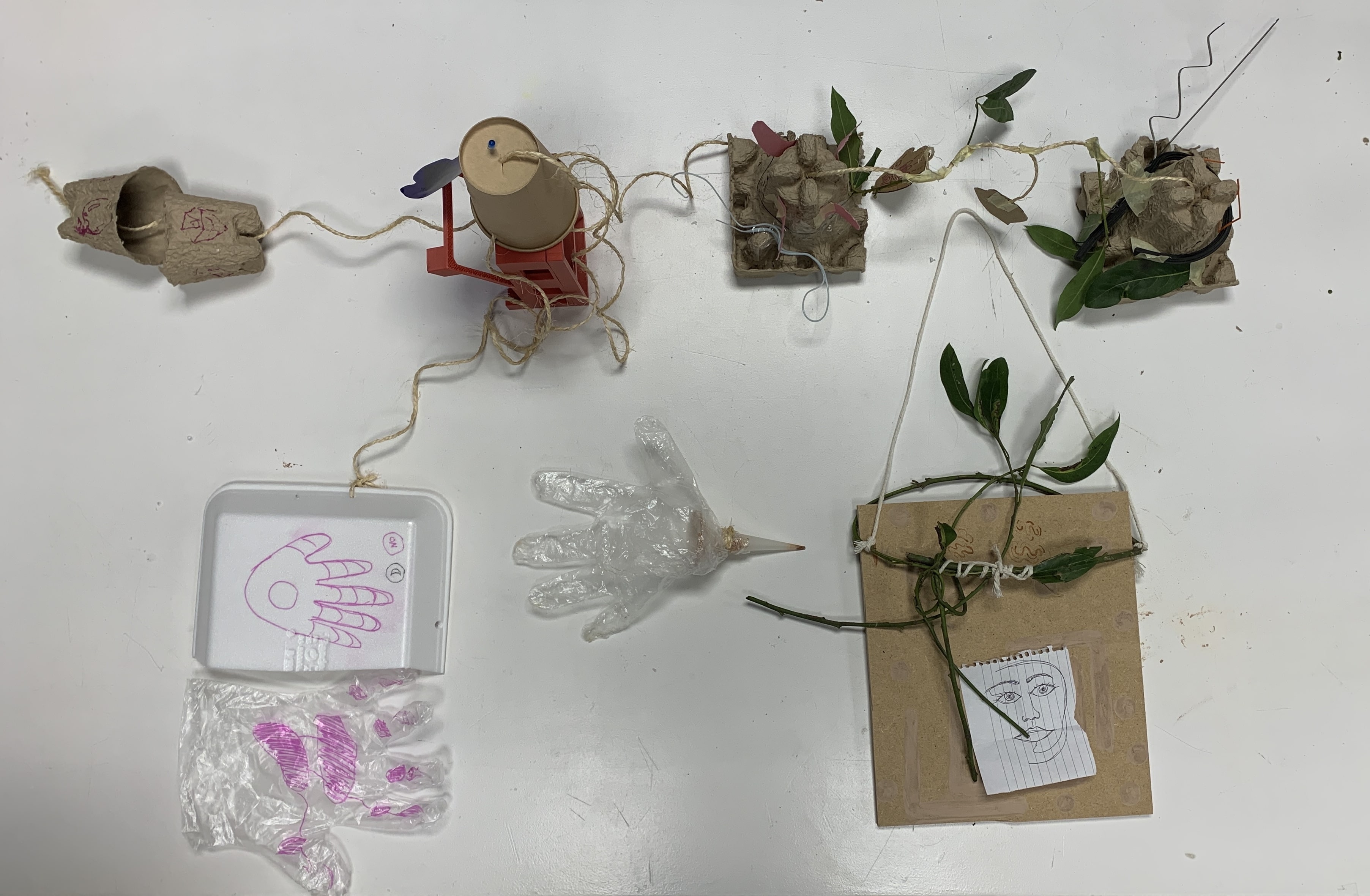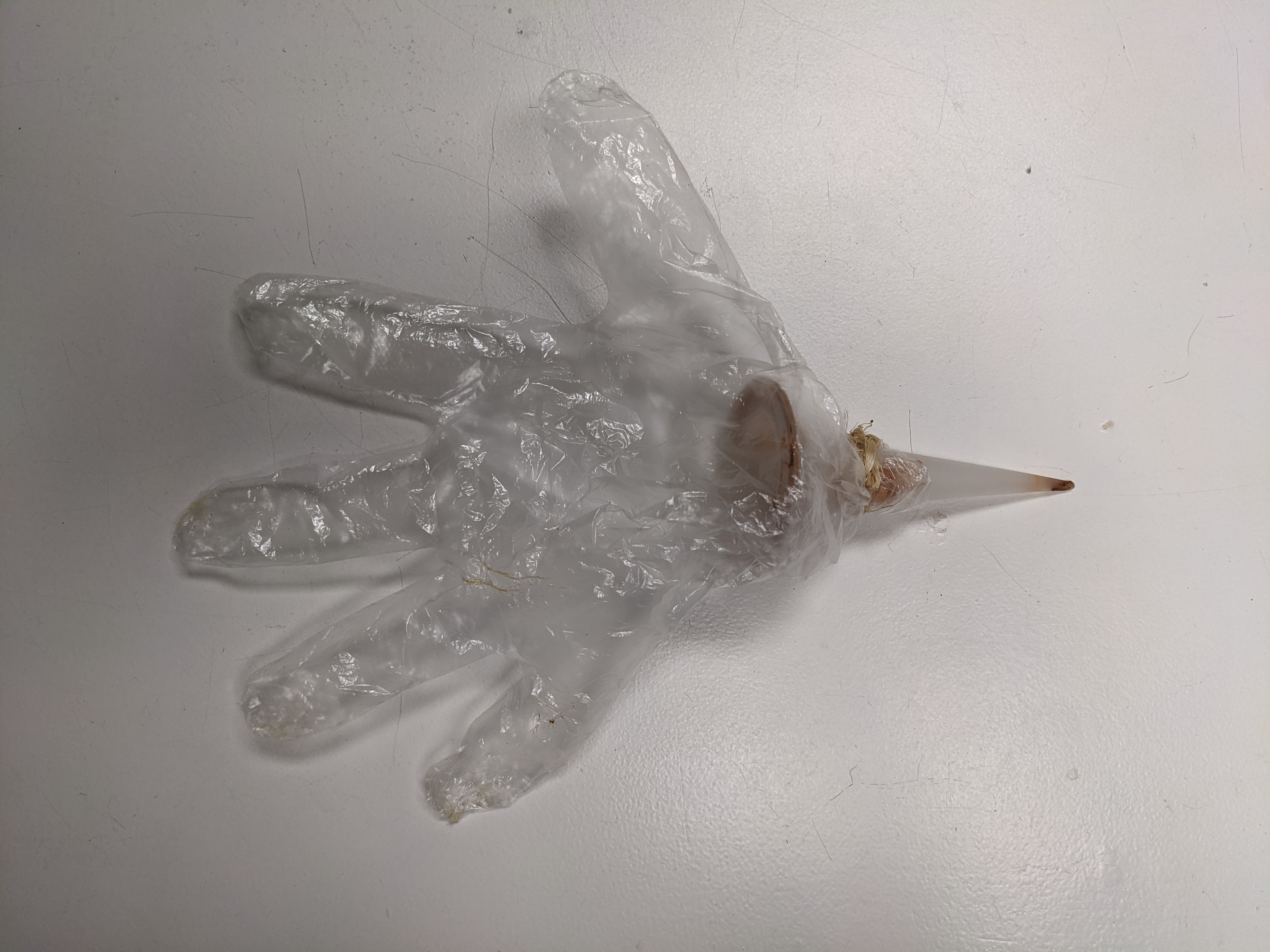
Magic Machines
We were to sketch a short self-portrait on a small sheet of paper for the first exercise of this course. We then made "Magic Machines" out of material waste for that version of ourselves after it was finished. I sat with the post-consumer group, and we brought together our creations after having made the prototypes individually. Cardboard, 3D printer debris, fablab scraps, and trash discovered around IAAC served as our materials. Despite the fact that we individually developed unique artifacts, we as a group have discovered common meanings for our magical machines. Human connections could be summarized as a machine that aids communication between two individuals, detects emotions through empathy, finds new ways of catching potential friends, finds your loved ones, or frames a moment. We all worked together to come up with a way to make something that interacts with one another emotionally, cognitively, and physically.

Individual Magic Machine
My machine consisted of a simple device that would benefit those looking for loved ones after a natural disaster such as an earthquake. The device would shoot a little laser that would indicate the user if a thermal signal from a human being was detected. This device could also help people in all sorts of situations find their loved ones, be it at a disaster setting or out camping. What I learned from this exercise was the magic of simplicity, sometimes a device that is easy to hold, easy to understand, and easy to use can have a bigger impact than an overly complex machine that few are able to use.
First Person Exploration
Our mission was to complete a 24-hour rigorous exercise in which we would immerse ourselves in a certain topic of interest. We would be able to experience our ideas by incorporating them into every aspect of our existence during that day. We can develop new ideas and fascinating outcomes by shifting our thoughts from scheduled routines into everyday chaos. My first person exploration revolved around the topic of recycling. I am constantly thinking about my own waste, the waste from others, the global waste management system and how it is so fundamentally broken. Back in Panama where I'm from, recycling is very limited and inefficient. We often look to Europe as an example of how recycling should be, but as I arrived here and analysed my surroundings I grew wary of the image I had previously created in my head of how recycling in Spain would be. In order to further my exploration of recycling to a first person perspective, I decided to chase trash around my neighborhood and see whether its contents were being sorted properly or not. I also extrapolated recycling data from official sources of the internet to the recycling bins, because even though an item might be recyclable and is properly sorted in the correct bin, it may not be recycled due to recycling capabilities of the centres, cost of recycling, contamination or a range of other reasons.
Reflection
Why did I make it and why did it matter?
I carried out this experiment because of the stark contrast between people's perceptions and realities when it comes to the management of their solid waste, and more specifically their recyclable trash. It's very important that we breach the disconnect between us and the post-consumer life of the items we discard. Knowing where our products come from and where they go allows us to make more informed decisiones regarding our consumption and it allows us to demand political and industrial action to mitigate some of the worst consequences of an ungovernable problem.
What happens when I involve myself?
Involving myself required ridding myself of my ego, conventional social expectations, and being able to see the system from a satellite view. Involving myself helped me understand just how out of touch people are to many aspects of their daily life. Our hyper-productive lifestyle attempts to squeeze every last bit of productivity out of us, and that leaves very little space for us to have to think about the complete life cycle of our products. We're too busy with our work and school to have to on top of it worry about where my waste goes. A first person perspective into waste and how people view their own waste helps one realise that so many inequities go unchallenged in our society from general disinterest as a product of a generalised fatigue.
What happens when I use myself as an instrument?
Using myself as an instrument is the only way one can reach a complete first person perspective of a situation. From the outside, one can assume and study a lot, but the experience attained from personally diving into an issue with one's physical being will centre any perspective.
Did anything change about my way of working?
The main driver of change from this experiment was the push out of the comfort zone that one is forced to undergo. That generalised feeling on discomfort is a cathalyst for prioritisation. When one is pushed to the limits of their comfort, the truly important aspects of an idea are the only things that remain. The main change that I have undergone from this experiment is the learning to confirm or reject any biases I might have jumping in an idea from a lived experience of a hypothesis.
What does it mean for my future work?
As my work deals with the bioremediation of waste, my future work will have to deal with the current processing of that waste and the communities affected by it. I will have to experience first hand why previous solutions that seem like silver bullets from the outside haven't worked, and why solutions that work in one place may not work in another. It will also include the lived experience of the consumer, and how they dispose of their waste. How this idea of waste could perhaps be changed by a shift in perspective, or a change in reality.